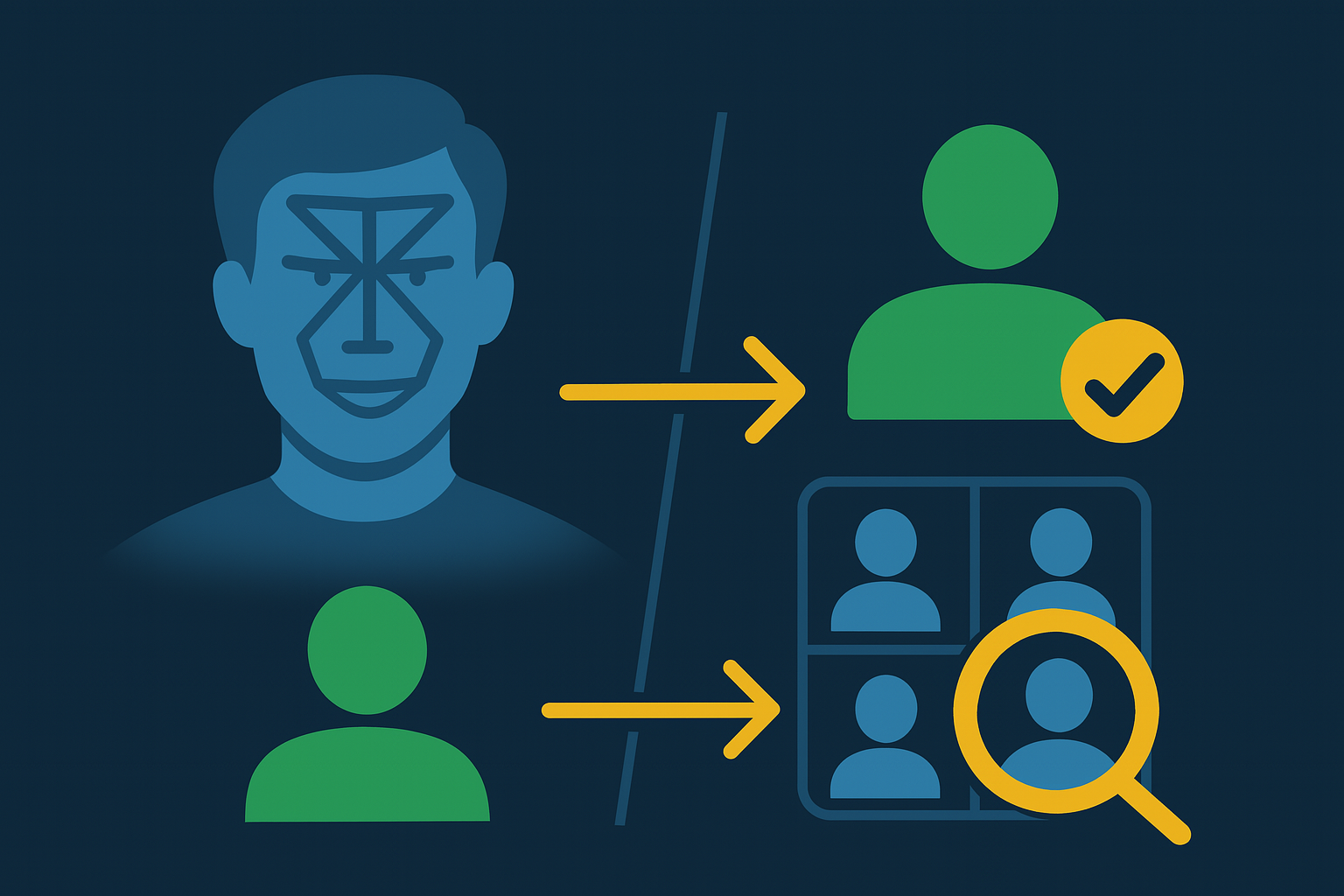Biometrics refers to using a person’s unique physical or behavioral traits to verify their identity. It is the automated recognition of individuals based on their biological or behavioral characteristics. Common biometric modalities include fingerprints, facial recognition, iris scans, and voice patterns.
For example, face biometrics uses the unique features of a person’s face (like the distances between key facial points) to recognize or verify who they are. This technology is already familiar – from unlocking smartphones with your face to automated passport control gates at airports.
Biometric systems generally work by capturing a biometric sample, extracting a digital template of identifying features, and then comparing that template against a stored reference. In a face recognition system, a camera captures your face (the biometric capture), software converts that image into a numeric template, and then compares it to the reference template on file to see if it’s a match. If the similarity is above a certain threshold, the system verifies that you are the same person (a 1:1 match or comparison). This is known as biometric verification. If the system instead searches through a database of many people to find who you are (1:n or 1 to many search), that is biometric identification. In both cases, the core premise is that each person can be accurately identified by intrinsic traits – your face is you.
Face biometrics is a prime example of how biometrics enhance security and user experience. Unlike passwords or PINs, you can’t forget your face, and it’s difficult for an imposter to steal or mimic it convincingly (especially when anti-spoofing measures are in place – such as liveness and inject attack prevention). Modern face recognition can verify an identity in seconds, far faster than manual ID checks, making processes like border control and customer onboarding both more secure and more convenient. It’s no surprise that international standards bodies have embraced biometrics: for instance, the International Civil Aviation Organization (ICAO) adopted standardized face image formats defined by ISO/IEC to use facial recognition in e-passports. Your biometric passport photo conforms to these global standards, ensuring any country’s border system can read and match your face data accurately.
Standards play a crucial role in biometrics and the field is evolving with new standards being developed to meet todays requirment, such as the ISO/IEC JTC 1/SC 37 and for example, ISO/IEC 24745 that outline standards for biometric information protection. It outlines best practices like making biometric templates irreversible (so one cannot reconstruct your face image from the stored data) and unlinkable (so that a stolen template can’t be used to identify you across different systems or databases) or revocability and renewability (so that a template can be revoked or renewed, actually resetting your biometric reference). In short, these standards ensure that biometric systems are not only of high quality, but also respect privacy and security requirements.
Face biometrics in action: Imagine a user enrolling in a banking app with selfie biometrics. The app will guide the user to take a selfie and perhaps a photo of their ID. The facial verification engine will create a template from the selfie and compare it to the template of the ID photo to verify they are the same person. Behind the scenes, all of this follows standards: image quality checks, template formats, matching algorithms, and data protection steps are all defined by industry best practices. When done correctly, biometric verification adds a strong layer of security (the user’s real face) with minimal friction – often just looking into a camera.
Biometrics has “come of age” and is proving its value in countless applications – from unlocking phones to safeguarding bank accounts.
Is your organization ready to leverage the power of biometrics? Stay tuned for our next post on where to apply biometrics in your customer journey and how to implement it securely. And if you’re curious about using face or other biometric verification to protect your business right now, reach out to our team – we’ll help you explore the best solution for your needs.

